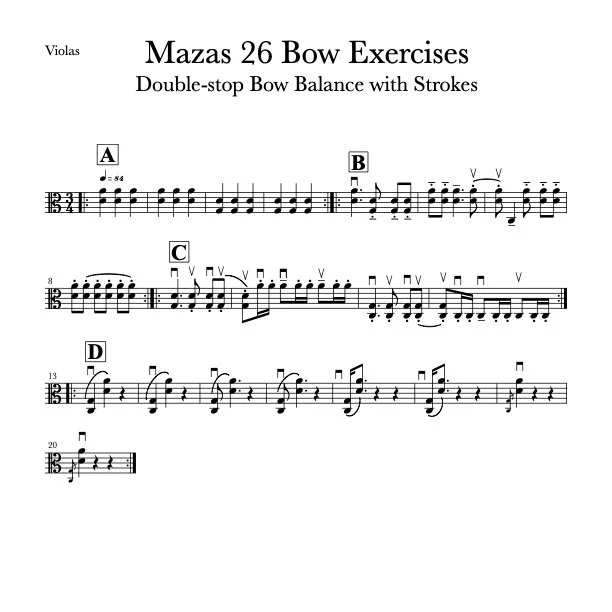IN THIS LESSON
DOUBLE-STOPS REQUIRE FINESSE FROM THE BOW AS WELL AS THE LEFT HAND.
Much of the middle section of the etude features double-stops, some lively and all melodic. To play these effectively, we need to practice maintaining bow balance and ensuring both strings are heard evenly.
Playing two notes at once does not mean playing with twice as much bow weight! Focus on a quick and open bow to spin both strings.
Here's how to approach practicing double-stops in this etude:
A) Smooth Singing Sound (Measures 1-4):
Focus on producing a smooth, singing sound while playing double-stops.
Lead string crossings from the elbow, to reach the proper level for the start of each note.
Ensure both strings are equally loud, clear, and resonant.
Start slow to use full bows on each note.
B) Lyrical but Bright (Measures 5-9):
Aim for a lyrical yet bright sound through light, quick bow speed.
Practice keeping both strings audible and even.
The final measure requires a fast downbeat, traveling to the upper half to make room for the next 5 notes.
Practice piano and forte.
C) Alternating Lyrical and Peppy Off-the-String Strokes (Measures 9-12):
Alternate between lyrical double-stops and peppy off-the-string strokes. Aim for as obvious of a character change as possible - this is a great example of the operatic dialogue.
This will help you develop agility and control in transitioning between different styles.
D) Four-Note Chords (Measures 13-20):
We also need to be ready to play four-note chords, which we can prepare with a style we’ll call "2+2."
In 2+2, practice playing the lower two strings first, then moving to the upper two strings by leading with the elbow of your bow arm.
Gradually play the lower notes faster so the top two notes can sing.
Try to use about 1/4 of the bow on the lower two notes, saving the rest for the top notes.
